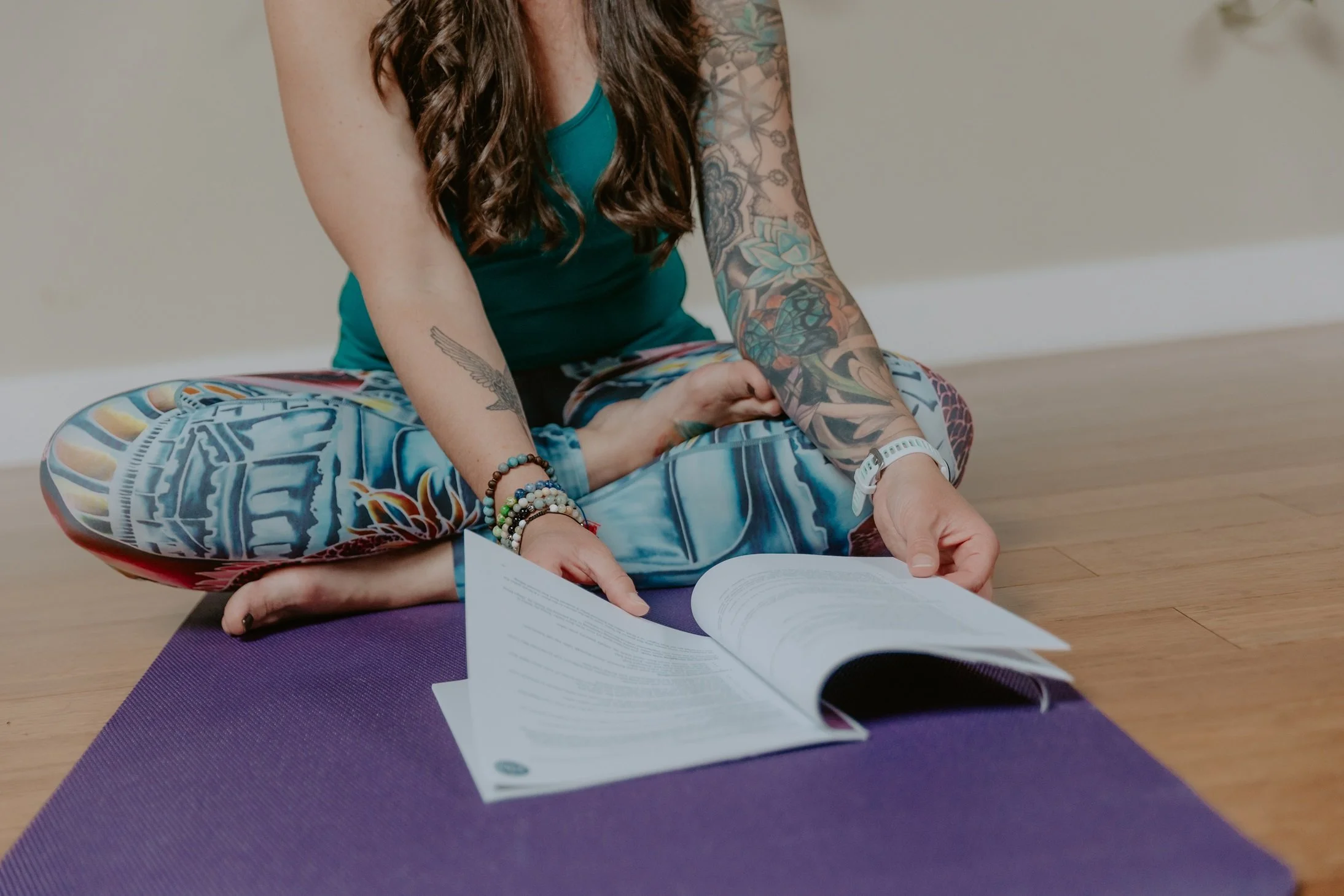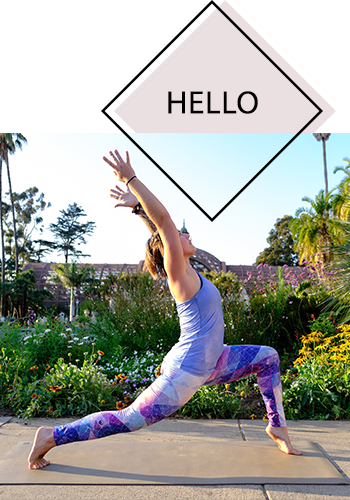Yoga Essentials for Beginners
/Yoga is a wonderful tool for balancing your body, mind and spirit.
As a beginner, the practice can seem a bit overwhelming. There’s a lot to keep track of in class, and you may find yourself wondering:
Am I doing the poses well? Are my limbs in the right place, am I in alignment?
How do I do these breathing techniques?
My thoughts are still all over the place and I’m not sure how to meditate. Am I doing this right?
Are other people watching me? Am I making a fool of myself right now?
Do I have the right gear to get me through a class?
Am I in the right kind of class for my experience level and my needs?
Let me start by sending you a deep breath and reminding you that it’s OK not to have all the answers right now. Being at the beginning is a great place to be. As long as you stay open-minded and give yourself grace— and trust your intuition— you’ll do just fine. ;)
Here are five ways to jump in to your practice.
Be Intentional
What brings you to yoga?
Begin your practice by getting clear on what you want out of it. What are your health and wellness goals? What benefits are you hoping to experience from practicing?
I encourage you to do some research into different styles of yoga and of the history of the practice. Watch videos or read on different yoga poses and movements. Begin from the point of knowledge to generate a long-lasting desire to get you through the journey.
Focus on You
It’s easy to feel intimidated walking into a yoga studio for the first time. You aren’t sure what to expect. You aren’t sure who else is going to be there. Take a moment to set up your space and draw your attention inward. This class is all about you, and the experience you want to create. Resist any urge to compare yourself to others around you or make judgments about your practice being “as good as” someone else’s.
To the best of your ability, keep your focus on your own experience throughout the practice.
Wear What’s Comfortable to You
There are a lot of yoga wear options out there. I suggest finding clothing that’s comfortable to you and that you essentially won’t need to think about during class.
If you want form fitting gear that’s stylish, you could check out Curves workout clothes. Consider materials that are sweat-wicking, especially if you’re taking a hot yoga class.
If possible, try out your gear from home to see how it performs during a practice—whether or not it’s comfortable, if it moves around during different poses.
Create a Safe Space
If you’re practicing at home, spend a little time creating an environment that helps you focus and relax. Notice how noisy the space is. Open a window for fresh air.
If you’re attending class at a studio or gym, notice the energy of the space.
Do you feel comfortable here? Do you feel like you can be yourself? Do you feel welcome?
It may take a few tries to find a space that resonates with you, and give yourself permission to be patient in the process.
Talk to Your Teacher
I can’t stress this point enough.
Highly encourage you to have an open conversation with your teacher. Ask questions. Share your reflections about the class— what helped you the most? How does your body feel after the sequence of poses you just did? Which postures felt uncomfortable or like you needed to skip them or modify?
Obviously if you’re practicing at home with an online video it may not be possible to ask questions directly of the teacher. Reach out to a different teacher (feel free to email me!)
I think one thing a lot of new yoga students don’t do is have ongoing conversation with their teachers about the practice, and that’s a missed opportunity to learn and grow even more. Plus, as yoga teachers, we love hearing from students! We want to make our classes better, more focused, more dialed in to exactly what you need. Come chat with us before or after class— we appreciate it!
Invest in a Great Yoga Mat
Yoga mats come in different varieties and materials. Consider finding an anti-slip yoga mat with some thickness for comfort and durability. Skid-free mats come in handy during intense movements. Ensure that your mat yoga mat of choice can absorb the sweat without becoming too uncomfortable, sticky, or slippery.
Also consider whether you’ll be using the mat indoors or outdoors, and how heavy or bulky it is if you are going to be traveling with it.
If you aren’t sure how often you’ll practice, it’s OK to start with an inexpensive, easy-to-find mat from your local sporting goods store. If you’ve taken 10 classes or more and you’re finding that you love it and want to continue on with yoga, consider making an investment in a high-quality mat. Awesome yoga mats can often be $75+— which I know sounds like a lot. If you consider how often you’ll use it, though, a great yoga mat is a tool worth investing in. If you need recommendations, feel free to reach out.
Stay Open-Minded and Try New Things
As you’re starting out, I recommend trying a variety of yoga classes. If you find a teacher whose teaching style and words resonate with you, take their class. Also be willing to take classes that feel out of your comfort zone. If you tend to take vigorous, challenging classes, try a slow, restorative class. Or vice versa.
Stay open and curious about the experience.
Write down your thoughts about it.
Share with a friend.
Be kind to yourself as you are learning.
Yoga helps in shaping both the body and mind. The benefits of practicing yoga are many; the idea here is to explore your limits, not strive for perfection.
This practice is a journey, and what a gift that you’ve started yours.
As always, if you have questions or need support, I’m here. ;)
















Reflections on dipping in 30-something-degree water.